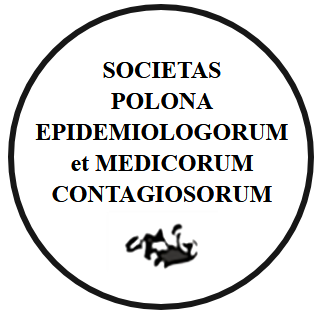ABSTRACT
AIM OF THE STUDY. The study aims to present the current state of knowledge on the impact of traditional cigarettes and the nicotine contained in them on the incidence and course of SARS-CoV-2 infection. Moreover, we decided to exhibit the possibility of using this substance to treat COVID-19 infections.
MATERIAL AND METHODS. The latest available scientific publications were reviewed until November 14, 2020, from the PubMed platform.
RESULTS. Nicotine is a cholinergic agonist and pro-inflammatory cytokines inhibitor. Some authors present that smoking and nicotine reduce the amount of the ACE2 receptors which are used by the novel coronavirus to enter cells, while others claim that ACE2 receptors are upregulated in smokers. Moreover, the interaction of SARS-CoV-2 with nAChR is suspected of dysregulation of the nicotinic cholinergic system, which is associated with the pathophysiology of COVID-19. Due to the harmfulness of cigarettes, a high frequency of smokers is suspected among people suffering from COVID-19. However, some studies report that the number of current smokers hospitalized for SARS-CoV-2 infection is lower than expected, considering the prevalence of smoking in individual countries. Nicotine could restore the impaired function of the nicotine cholinergic system and possibly mitigate the cytokine storm.
CONCLUSIONS. There is no clear attitude regarding the impact of smoking on the new coronavirus infection now. Researchers do not recommend smoking as a tool to combat the pandemic and show the importance of fighting addiction to reduce the adverse health effects of smoking. Both the relationship between cigarettes and the morbidity and severity of COVID-19, as well as the possibility of using nicotine in the treatment of the disease, require further analysis.
STRESZCZENIE
CEL. Celem pracy jest przedstawienie aktualnego stanu wiedzy na temat wpływu papierosów i zawartej w nich nikotyny na zachorowalność i przebieg zakażenia wirusem SARS-CoV-2 oraz ukazanie możliwości wykorzystania tej substancji do leczenia COVID-19.
MATERIAŁ I METODY. Dokonano przeglądu najnowszych publikacji naukowych do dnia 14.11.2020, wykorzystując w tym celu platformę PubMed.
WYNIKI. Nikotyna jest agonistą cholinergicznym oraz inhibitorem cytokin prozapalnych. Część autorów ukazuje, że palenie i nikotyna zmniejszają ilość receptorów ACE2, które są wykorzystywane przez nowego koronawirusa do wnikania w komórki, inni z kolei twierdzą, że palacze mają podwyższoną ekspresję tych receptorów.
Ponadto interakcja SARS-CoV-2 z nAChR podejrzewana jest o rozregulowanie nikotynowego układu cholinergicznego, który jest powiązany z patofizjologią COVID-19. W związku z dużą szkodliwością papierosów podejrzewa się częstsze występowanie palaczy pośród osób chorych na COVID-19. W części badań podano jednak, że liczba obecnych palaczy hospitalizowanych z powodu infekcji wirusem SARS-CoV-2 jest niższa niż oczekiwano, biorąc pod uwagę rozpowszechnienie palenia w poszczególnych krajach. Nikotyna potencjalnie mogłaby zostać wykorzystana do walki z epidemią wirusa SARS-CoV-2, może ona przywrócić upośledzoną funkcję nikotynowego cholinergicznego systemu oraz prawdopodobnie złagodzić burzę cytokin.
WNIOSKI. W chwili obecnej nie ma jednoznacznego stanowiska odnośnie wpływu palenia na zakażenie nowym koronawirusem. Badacze zgodnie nie zalecają palenia jako narzędzia do walki z pandemią i ukazują istotę walki z nałogiem w celu zmniejszenia niepożądanych skutków zdrowotnych palenia. Zarówno zależność między papierosami a zachorowalnością i ciężkością przebiegu COVID-19, jak i możliwości wykorzystania nikotyny w leczeniu nowej choroby, wymagają dalszych pogłębionych analiz.
You can change cookies settings in your browser. Restricted use of cookies in the browser configuration may affect some functionalities of the website.





